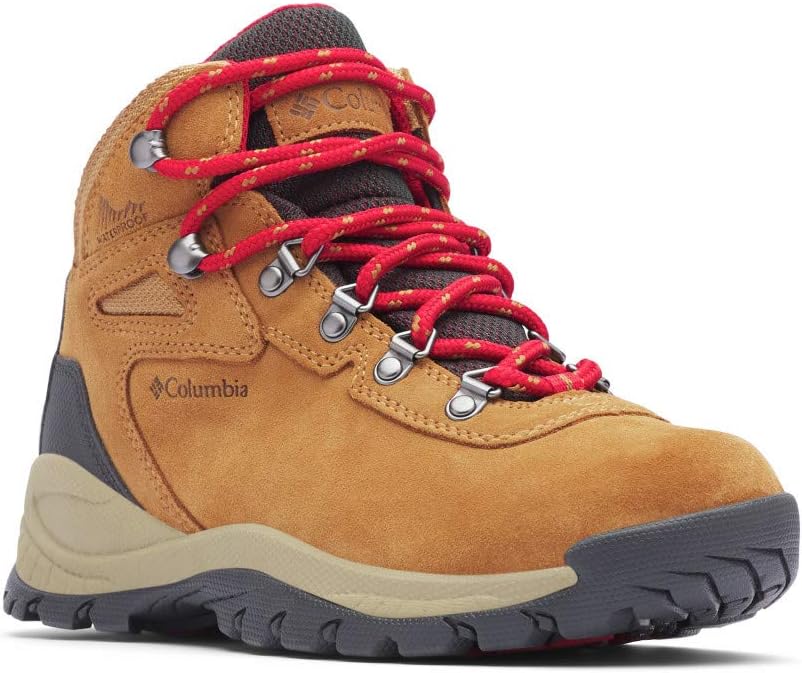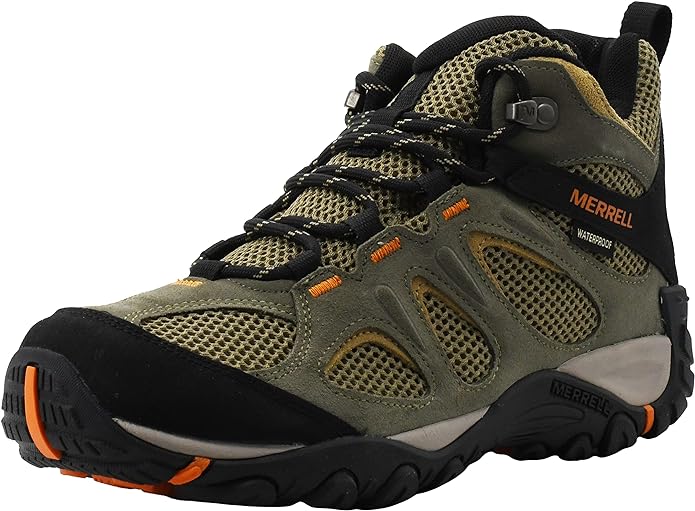Are you ready to hit the trails and explore the great outdoors? Before you lace up your hiking boots and head out, it’s essential to make sure that your footwear is properly secured and comfortable for the journey ahead. In this blog post, we will guide you through the process of tying hiking boots, ensuring that you have the knowledge and skills to create a secure and supportive fit. From understanding your boot’s eyelets to choosing the right lacing technique and adding waterproofing techniques, we’ve got you covered. Follow along as we break down each step, so you can confidently tie your hiking boots and embark on your next adventure with comfort and confidence. Whether you’re a seasoned hiker or just starting, these tips will help elevate your hiking experience. So, let’s dive in and get ready to hit the trails!“Learn the best lacing, knot, and waterproofing techniques for ultimate comfort and support in your boots. Adjust for perfect fit and durability.”
Choosing The Right Lacing Technique
When it comes to lacing techniques for your boots, there are several options to consider. The right lacing technique can make all the difference in the comfort and support of your footwear. One of the most popular lacing techniques is the regular criss-cross method. This method provides a secure fit and is suitable for most footwear. However, for those with high arches or wide feet, the straight lacing technique may be more comfortable. This technique allows for more flexibility in the lacing pattern, providing a customized fit for different foot shapes.
Another important consideration when choosing the right lacing technique is the type of activities you will be engaged in while wearing the boots. For hiking or running, the loop lacing technique may be more suitable as it provides a snug fit and prevents heel slippage. Alternatively, for casual wear or work boots, the ladder lacing technique creates a visually appealing pattern while also ensuring a secure fit.
It’s also essential to take into account any specific foot issues you may have, such as pronation or supination. In these cases, the window lacing technique may be beneficial as it allows for more or less pressure to be applied on specific areas of the foot, providing added comfort and support. In addition to the lacing technique itself, the type of laces used can also impact the overall fit of the boots. Elastic laces are great for those wanting a more flexible fit, while waxed laces are perfect for adding extra durability and water resistance.
Ultimately, choosing the right lacing technique for your boots is a personal decision that should take into account factors such as foot shape, activity level, and any specific foot issues. By experimenting with different lacing techniques and types of laces, you can find the perfect combination that meets your individual needs for comfort, support, and style.
Understanding Your Boot’s Eyelets
When it comes to understanding boot eyelets, it’s important to know the function and placement of each one. The eyelets on your boots are the small holes through which the laces are threaded. They come in different shapes and sizes, and knowing how to utilize them will ensure a proper fit and support for your feet.
Typically, boots have anywhere from 2 to 5 pairs of eyelets, with some also including speed hooks at the top for quick lacing. The eyelets closest to the toe are often reinforced to prevent tearing and to provide stability during forward movement.
Understanding the placement of the eyelets is crucial for achieving the best fit. The lower eyelets, closer to the toe, are used to tighten the boot around the forefoot, while the higher ones control the fit around the ankle and calf. This means that when lacing up your boots, you should adjust the tension in the laces depending on which section of the boot you are securing.
Properly utilizing the eyelets on your boots can greatly affect your overall comfort and support when wearing them. By understanding their function and placement, you can ensure a secure fit that keeps your feet protected and stable throughout the day.
Creating A Secure Knot
When it comes to tying your hiking boots or work boots, creating a secure knot is essential for ensuring that your footwear stays in place and provides the support you need. A secure knot will also prevent the laces from coming undone while you are on the go, giving you peace of mind as you navigate rough terrain or tackle long shifts on your feet.
One of the most important factors in creating a secure knot is using the right technique. Start by crossing the laces over each other and then pulling them tight to create a firm foundation. From there, follow a reliable knot-tying method such as the double knot or surgeon’s knot to further reinforce the security of your laces.
It’s important to pay attention to the tension of the laces as you tie your knot. A well-balanced tension will ensure that the knot holds tight without feeling too constricting on your foot. Experiment with different levels of tension to find the perfect balance that suits your comfort and support needs.
Additionally, consider using waterproofing techniques to further enhance the security of your knot. Moisture can weaken the integrity of your laces, so applying a waterproofing treatment can help to keep them in top condition and prevent slippage or loosening over time.
Adjusting For Comfort And Support
When it comes to adjusting our boots for comfort and support, it’s important to pay attention to the lacing technique we use. A well-adjusted pair of boots can make all the difference in terms of comfort and support, especially during long hikes or walks. One key aspect to consider is making sure the laces are not too tight, as this could cause discomfort and even blisters. It’s important to achieve a balance whereby the boots feel snug and secure, but without cutting off circulation or causing discomfort.
Another factor to consider when adjusting for comfort and support is the placement of the eyelets. By utilizing different lacing techniques, we can adjust the pressure and fit of the boots to better suit our individual needs. For example, those with a wider foot may choose to skip certain eyelets to create more room, while those with a narrower foot may use a different lacing technique to create a tighter fit.
Additionally, creating a secure knot can contribute to the overall comfort and support of the boots. A secure knot will ensure that the laces stay in place and maintain the desired fit throughout wear. This can be especially important for outdoor activities where loose laces can lead to tripping or discomfort.
Lastly, applying waterproofing techniques to the boots can also contribute to their overall comfort and support. By keeping our feet dry, we can prevent discomfort and potential issues such as blisters. Finding a balance between waterproofing and breathability can ensure that our boots remain comfortable and supportive throughout various weather conditions.
Adding Waterproofing Techniques
When it comes to keeping your feet dry and comfortable while hiking or working outdoors, adding waterproofing techniques to your boots can make a huge difference. One of the most popular methods for waterproofing boots is to use a silicone-based waterproofer. These products are designed to create a barrier against water while still allowing the material to breathe, keeping your feet dry and preventing moisture from seeping in.
Another effective method for waterproofing is to use a wax-based waterproofing product. These typically come in the form of a paste or wax that can be applied directly to the surface of the boot. The wax forms a protective layer that repels water, keeping your feet dry in wet conditions. In addition to these products, some outdoor enthusiasts opt for using waterproof boot liners or gaiters to provide an extra layer of protection against moisture.
It’s important to note that while waterproofing your boots can be highly effective in wet conditions, it’s also essential to ensure that the rest of your outdoor gear is also waterproofed. This includes your outerwear, backpack, and any other equipment you’ll be using. By taking a comprehensive approach to waterproofing, you can ensure that you’ll stay dry and comfortable no matter what outdoor activities you have planned.
By incorporating these waterproofing techniques into your outdoor gear maintenance routine, you can enjoy all of your favorite outdoor activities without worrying about wet and uncomfortable feet. Whether you’re hiking, camping, or working outdoors, having dry and comfortable feet can make a world of difference in your overall experience.









